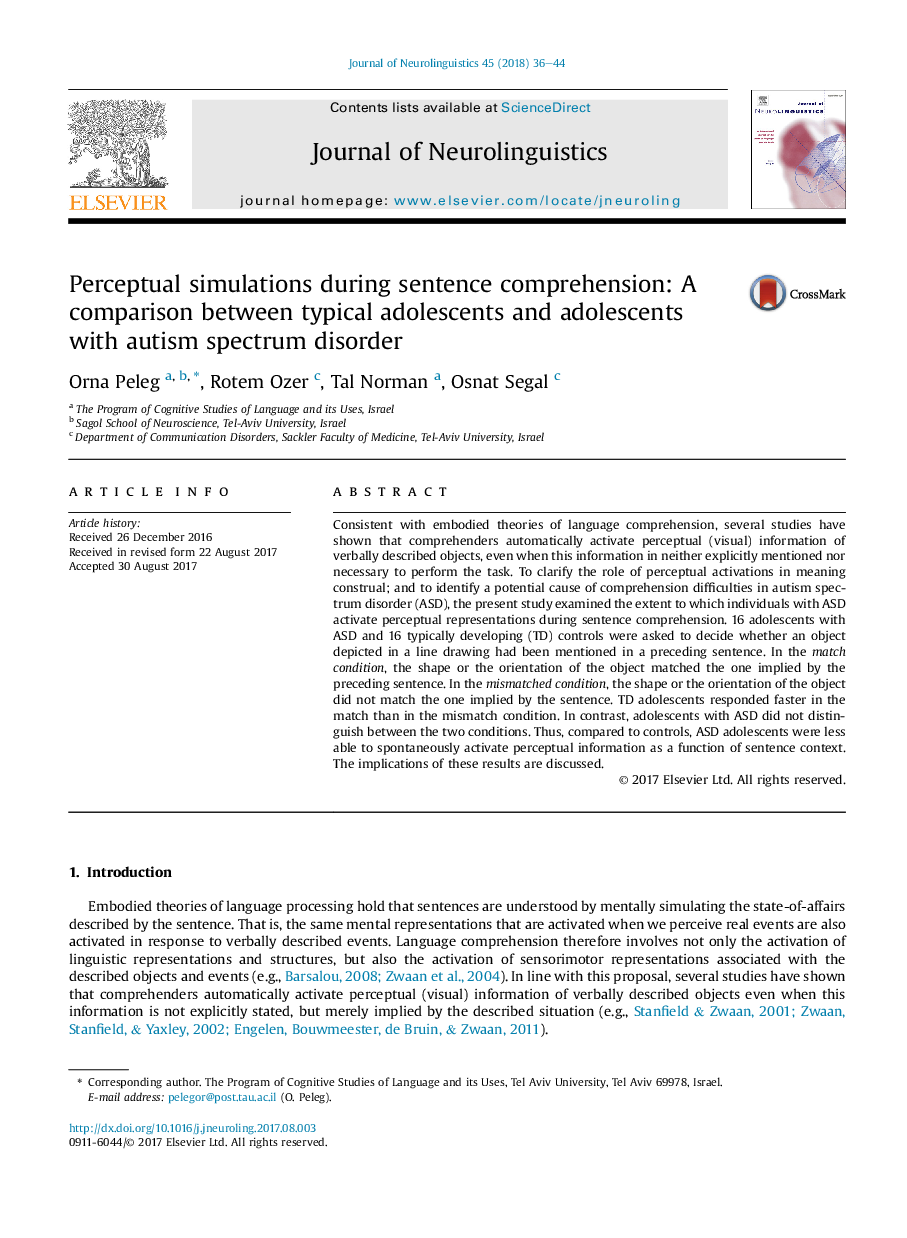| کد مقاله | کد نشریه | سال انتشار | مقاله انگلیسی | نسخه تمام متن |
|---|---|---|---|---|
| 5039191 | 1473163 | 2018 | 9 صفحه PDF | دانلود رایگان |
1.مقدمه:
2. روش ها
2.1. شرکت کننده ها
2.2. آزمایش اصلی - وظیفه تأیید جمله - تصویر
2.3. آزمایش اضافی برای شرکت کنندگان ASD - وظیفه تشخیص معنایی
3. نتایج
3.1. آزمایش اصلی - وظیفه تأیید جمله - تصویر
3.2. آزمایش اضافی برای شرکت کنندگان ASD - وظیفه تشخیص معنایی
4. بحث
- We tested the ability of TD and ASD adolescents to simulate verbally described scenes.
- TD adolescents spontaneously simulated the shape/orientation of described objects.
- ASD adolescents did not activate the visual representation implied by the sentence.
- This suggests that language processing may be less embodied in individuals with ASD.
Consistent with embodied theories of language comprehension, several studies have shown that comprehenders automatically activate perceptual (visual) information of verbally described objects, even when this information in neither explicitly mentioned nor necessary to perform the task. To clarify the role of perceptual activations in meaning construal; and to identify a potential cause of comprehension difficulties in autism spectrum disorder (ASD), the present study examined the extent to which individuals with ASD activate perceptual representations during sentence comprehension. 16 adolescents with ASD and 16 typically developing (TD) controls were asked to decide whether an object depicted in a line drawing had been mentioned in a preceding sentence. In the match condition, the shape or the orientation of the object matched the one implied by the preceding sentence. In the mismatched condition, the shape or the orientation of the object did not match the one implied by the sentence. TD adolescents responded faster in the match than in the mismatch condition. In contrast, adolescents with ASD did not distinguish between the two conditions. Thus, compared to controls, ASD adolescents were less able to spontaneously activate perceptual information as a function of sentence context. The implications of these results are discussed.
Journal: Journal of Neurolinguistics - Volume 45, February 2018, Pages 36-44
